Last updated on
Discover the simple steps to adjust your soft-close kitchen drawers for a smoother and quieter experience in this easy-to-follow guide.
These are the best soft close drawer slides and you can adjust them as you see fit:

Soft close drawers are a modern convenience that brings a touch of luxury to any kitchen. They have become increasingly popular due to their ability to prevent slamming, reduce noise, and extend the life of your cabinets.
However, there may come a time when you need to adjust them due to wear and tear or installation issues. In this article, we will guide you through the simple steps on how to adjust soft close kitchen drawers so that they can function smoothly and efficiently once again.
So grab your tools and let’s get started!
What's Inside
Understanding Soft Close Mechanism
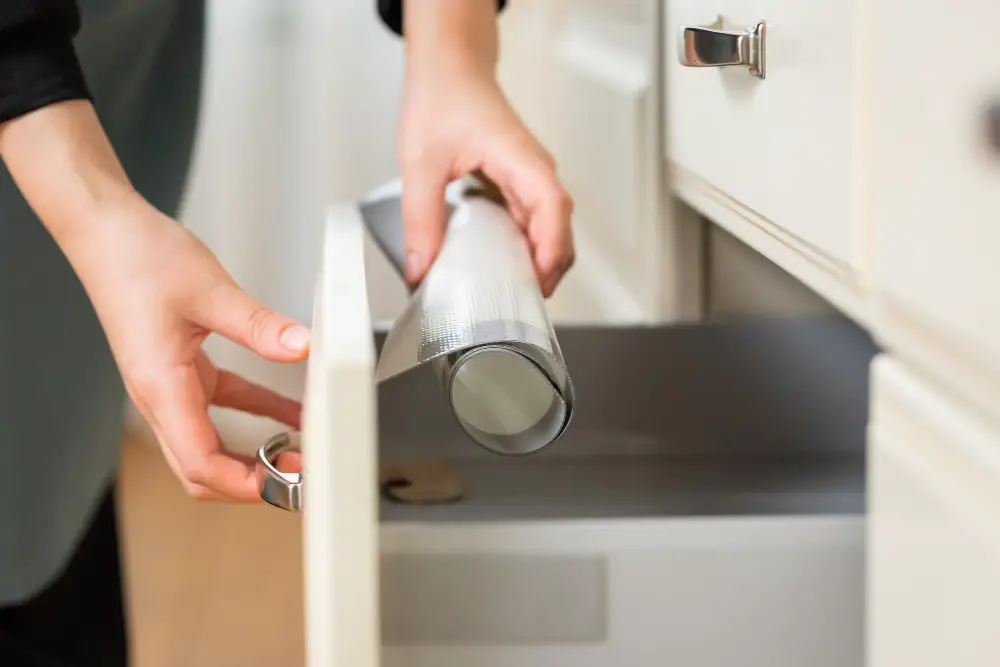
This mechanism is made up of two parts: a hydraulic damper and an adjustable slide. The hydraulic damper controls the speed at which the drawer closes, while the adjustable slide determines how far out or in your drawer sits when it’s closed.
When you push your soft close kitchen drawer to shut, you’ll notice that as soon as it gets within about 2 inches from being fully closed, its momentum will slow down significantly until finally coming to a gentle stop without any slamming sound. This is due to resistance created by compressed air inside of small cylinders located on either side of each rail.
Understanding how this mechanism works is crucial for adjusting your soft close drawers correctly.
Necessary Tools and Materials
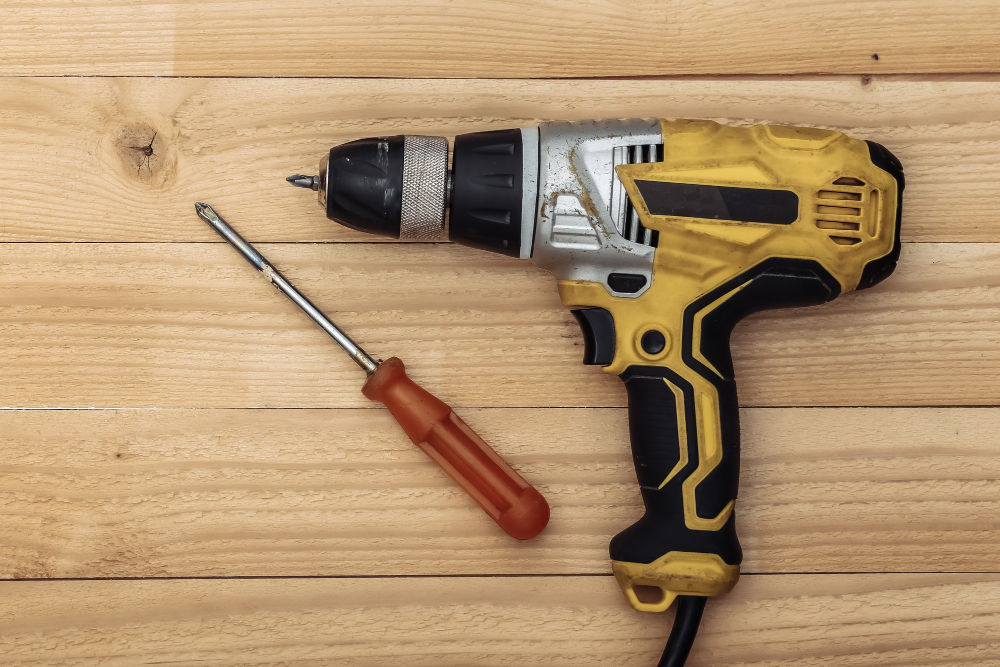
This will ensure that you have everything on hand to complete the job efficiently and safely.
The good news is that most of these items are likely already in your toolbox or can be easily purchased at a hardware store. Here’s what you’ll need:
- Screwdriver (flathead or Phillips depending on drawer type)
- Drill
- Measuring tape
- Pencil or marker
- Level tool (optional but recommended)
- It’s also important to wear protective gear such as gloves and safety glasses when working with power tools.
Safety Precautions
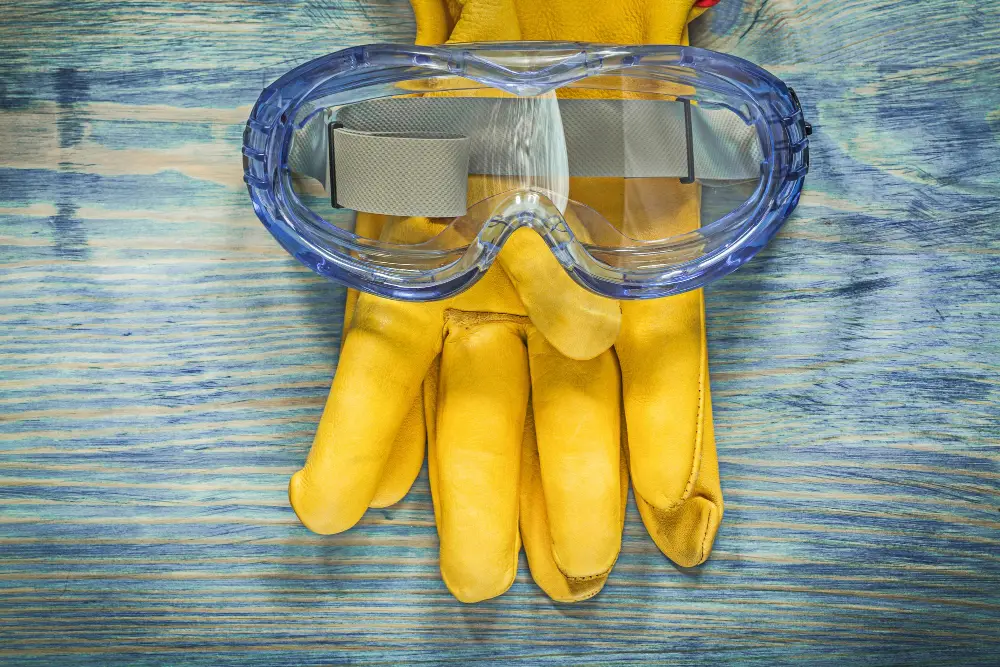
First and foremost, make sure you have turned off the power supply to any electrical appliances in your kitchen that may interfere with your work area. This will help prevent any accidental electrocution or damage to appliances.
Next, ensure that you are wearing appropriate protective gear such as gloves and eye protection while handling tools or sharp objects. It is also advisable to keep children and pets away from the work area for their own safety.
Lastly, be mindful of heavy drawer components when removing them from their tracks as they can cause injury if not handled properly.
Removing the Drawer
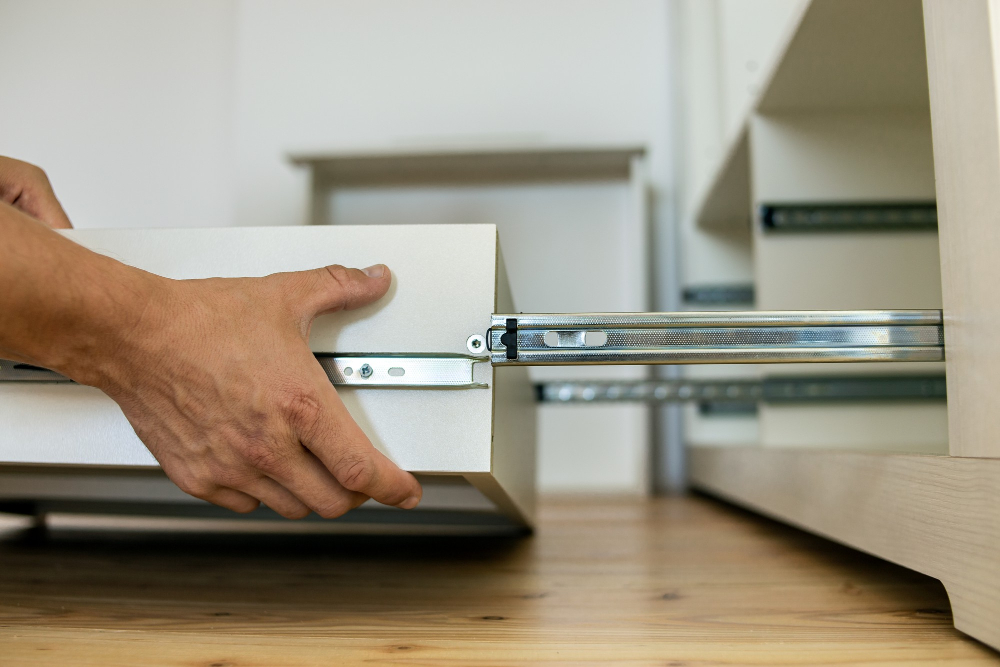
Removing the drawer is a simple process that requires minimal effort and tools. However, before proceeding with this step, ensure that there are no items inside the drawer.
To remove the drawer, start by opening it fully until it stops. Look for two levers located on each side of the slide near where they connect to either side of your cabinet’s interior walls or runners attached underneath them (depending on how they were installed).
Push these levers up while pulling outwards gently on both sides simultaneously until they release from their tracks.
Once released from their tracks, lift up slightly at an angle towards yourself so as not to damage any parts still connected between slides and drawers themselves – such as rollers or bearings – which may be present depending upon manufacturer specifications for installation methods used during assembly processes when building cabinets originally installed in your home.
Identifying Drawer Components
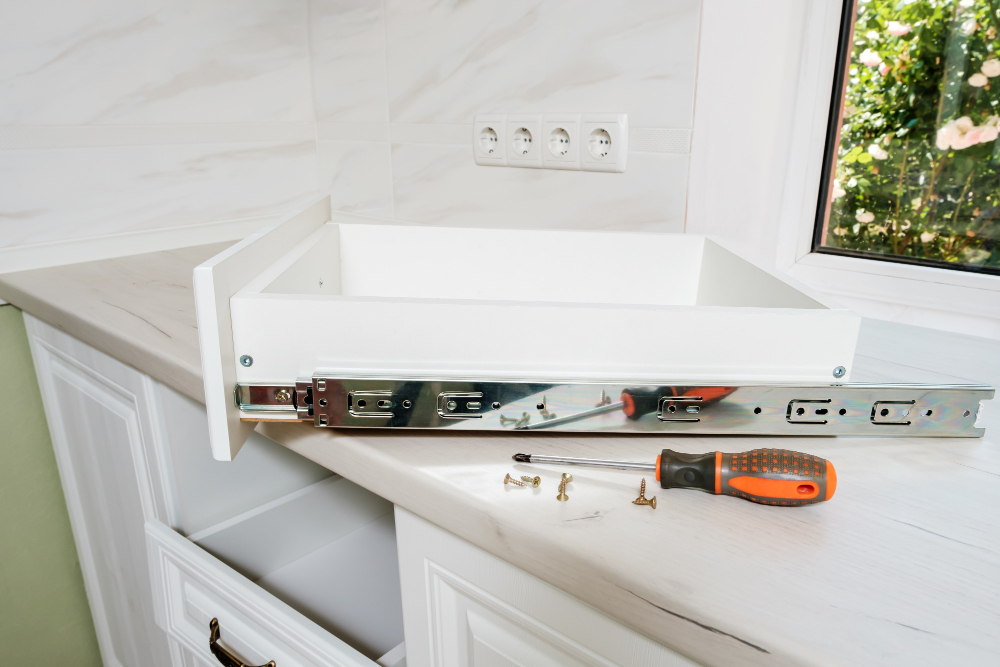
Knowing the different parts of your drawer will help you understand how they work together and which ones need adjustment. The main components of a soft close kitchen drawer include the slides, runners or glides, brackets, and front clips.
The slides are metal tracks that allow the drawers to slide in and out smoothly. They come in pairs – one on each side of the cabinet – with ball bearings that provide support for heavy loads.
Runners or glides are plastic pieces attached to either side of the bottom edge of your drawers that fit into corresponding slots on top edges inside cabinets.
Brackets hold everything together by attaching them securely onto both sides at their back ends while front clips keep fronts aligned properly when closed so they don’t rub against other surfaces causing damage over time.
Locating the Adjustment Screws
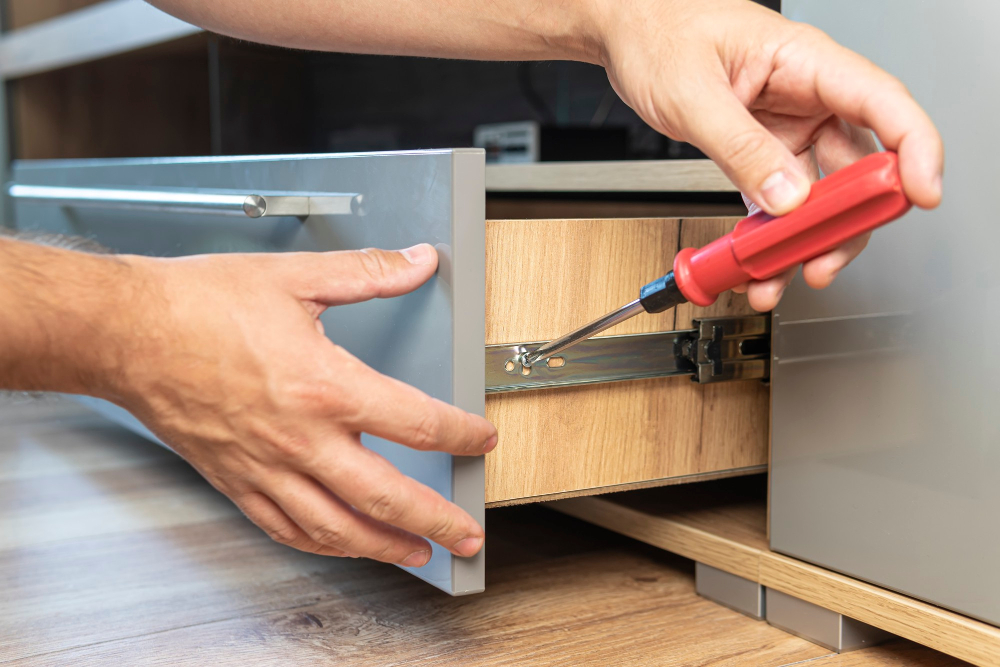
These screws are usually located on either side of the drawer slides and can be adjusted using a Phillips head screwdriver. The exact location of these screws may vary depending on your cabinet manufacturer, so refer to your user manual or contact customer support if you’re having trouble finding them.
In most cases, there will be two adjustment screws per slide – one for adjusting vertical position and another for horizontal position. By turning these screws clockwise or counterclockwise with a screwdriver, you can adjust the height and tilt of each slide as needed.
It’s important to make small adjustments at first until you achieve the desired result since over-tightening could cause damage to your drawers or slides.
Adjusting Drawer Position

This is a crucial step in ensuring that your soft close kitchen drawers function smoothly and efficiently. To do this, locate the adjustment screws on either side of the drawer slide and use a screwdriver to turn them clockwise or counterclockwise as needed.
If your drawer is too high or low, adjust both screws equally until it reaches the desired height. If one side of the drawer is higher than the other, adjust only that side until it becomes level with its counterpart.
It’s important to make small adjustments at first and test how well they work before making any further changes. Once you’re satisfied with their position, move on to fine-tuning their tilt for optimal performance.
Fine-Tuning the Tilt
This step is crucial in ensuring that your drawer glides smoothly and doesn’t rub against the cabinet frame. To do this, locate the tilt adjustment screws on either side of the drawer slide and use a Phillips head screwdriver to make small adjustments until you achieve a perfect fit.
Start by loosening both screws slightly before making any adjustments. Then, turn each screw clockwise or counterclockwise as needed to adjust for any tilting issues.
Be sure not to over-tighten or loosen these screws too much as they can affect how well your drawers glide.
Once you’ve made all necessary adjustments, test out your soft close kitchen drawers by opening and closing them several times while paying attention to their movement and sound levels. If everything seems smooth with no rubbing or sticking sounds, then congratulations! You’ve successfully fine-tuned your tilt adjustment for optimal performance.
Adjusting Drawer Slides
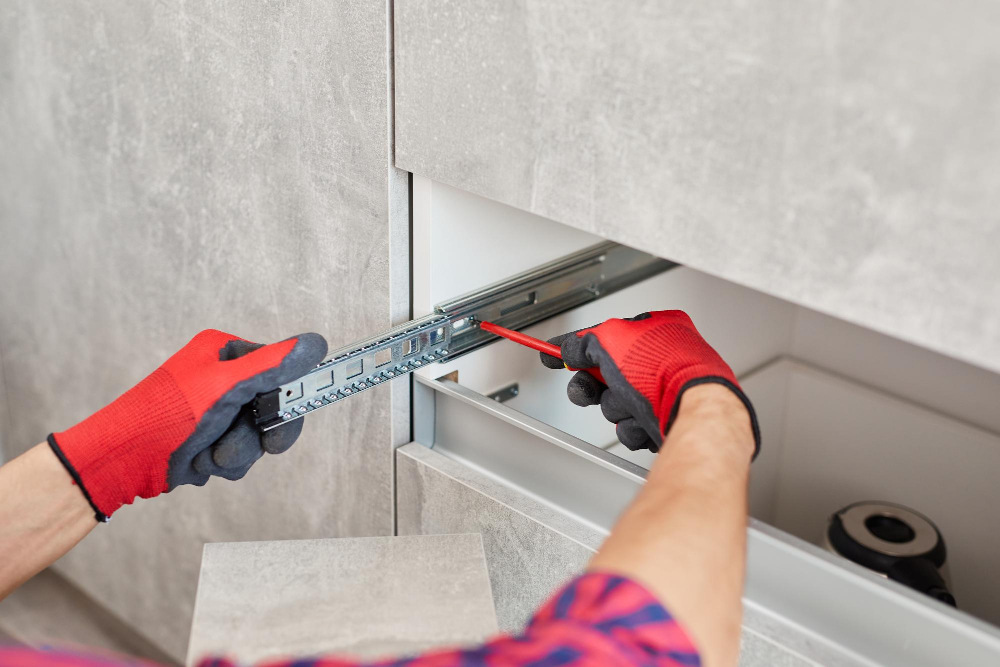
In this case, the issue could be with the drawer slides. Drawer slides are responsible for guiding your drawers in and out of their cabinets while keeping them level and stable.
To adjust your drawer slides, start by removing the soft close mechanism from both sides of the drawer slide. Next, loosen any screws or bolts holding each slide to its cabinet or frame using a screwdriver or drill.
Once loose enough to move freely but still attached to their respective frames/cabinets, gently push/pull on each side until they are even with one another horizontally (left-to-right) before tightening all screws/bolts back up again securely so there’s no wiggle room left whatsoever between either end where they meet at centerline when closed shut tightly together.
Aligning Drawer Fronts

Misaligned fronts can be an eyesore and affect the overall look of your cabinets. To align them properly, start by loosening any screws that hold them in place.
Then use a level to ensure they are straight both horizontally and vertically.
If you find that one side is higher than the other or not flush with adjacent drawers, adjust accordingly until everything lines up perfectly. Once aligned, tighten all screws securely but avoid over-tightening as this may cause damage.
Reinstalling the Drawer
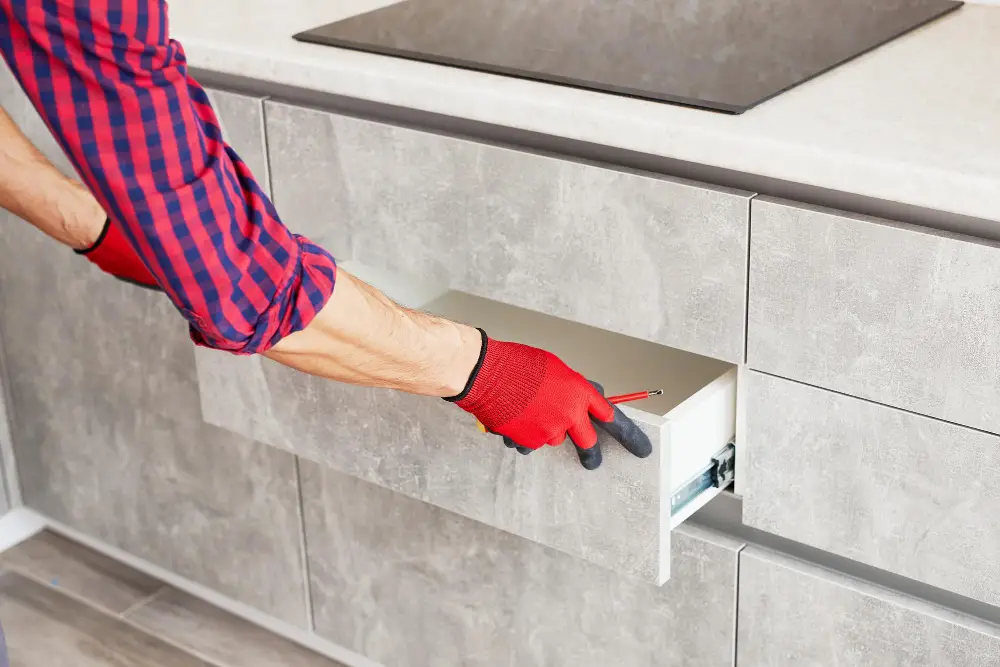
Begin by sliding the drawer back into its original position and making sure that it is level with the other drawers. Then, tighten any screws or bolts that were loosened during the adjustment process.
Next, check if there are any obstructions preventing smooth operation of your newly adjusted soft close drawer. If everything looks good, test out its functionality by opening and closing it a few times.
If you encounter any issues while reinstalling or testing your drawer after adjusting them, refer back to our troubleshooting section for guidance on how to fix common problems such as drawers not closing all the way or going ajar.
Testing Soft Close Mechanism
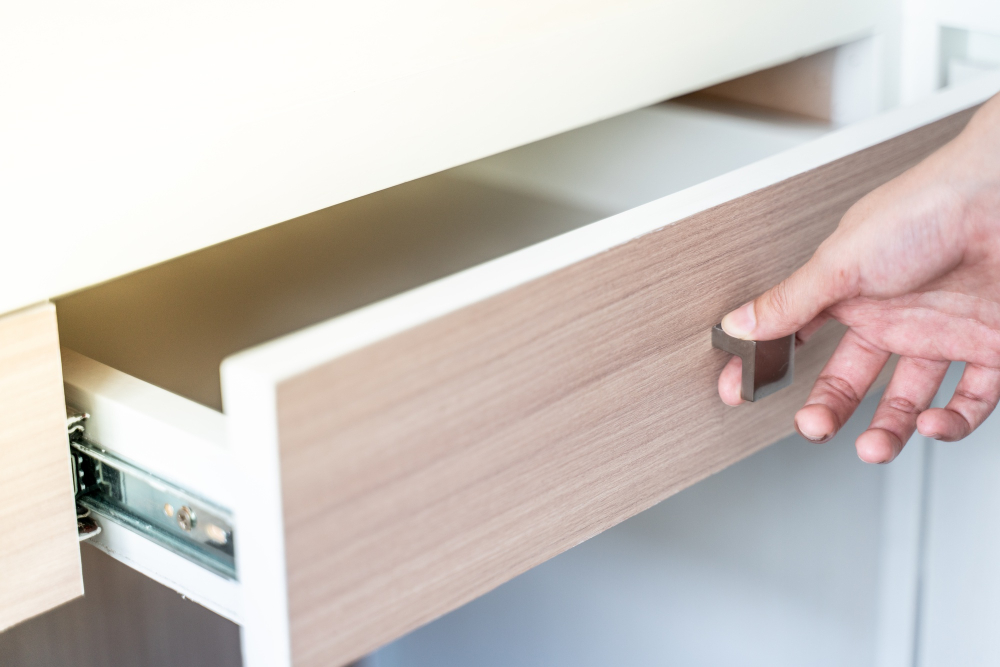
To do this, gently push the drawer until it reaches its halfway point and then let go. The soft close mechanism should take over and slowly pull the drawer closed without any slamming or bouncing.
If you find that your drawers are still not closing smoothly or making noise when they shut, repeat the adjustment process until they function as intended. It may take a few tries to get everything just right, but once you do, your kitchen will be quieter and more functional than ever before.
Remember that proper maintenance of your soft close drawers is crucial for their longevity. Regular cleaning with a damp cloth can help prevent dust buildup on moving parts while lubricating them with silicone spray can keep them running smoothly for years to come.
Adjusting soft-close kitchen drawers is an easy DIY task that anyone can accomplish with some basic tools and knowledge of how these mechanisms work.
Troubleshooting Common Issues
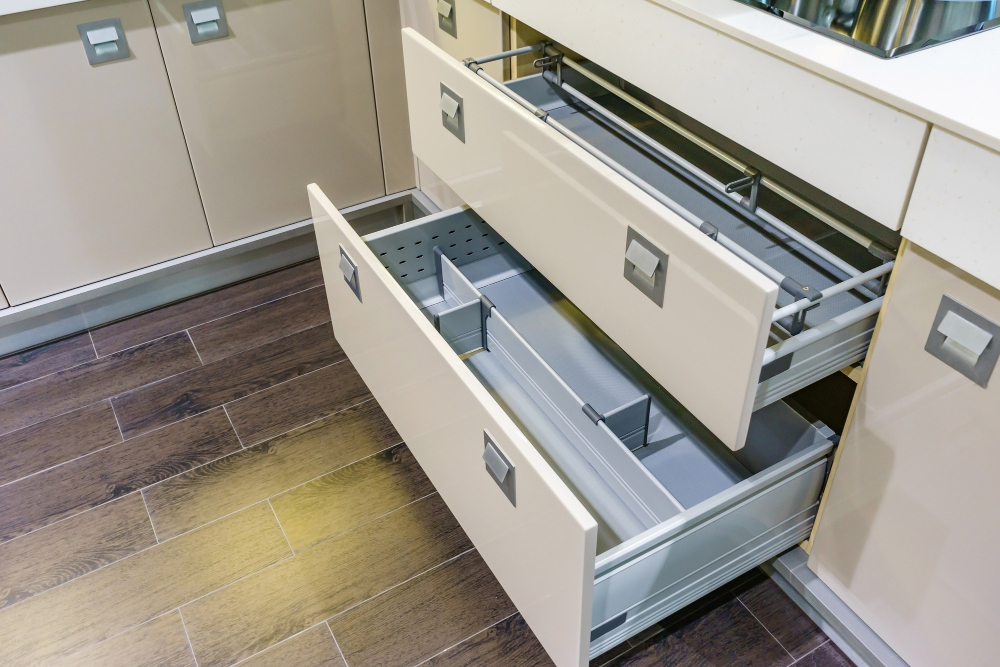
Here are some common problems and their solutions:
1. Drawers Opening Too Quickly: If the drawer opens too quickly, it means that the tension is not enough to slow down its movement.
To fix this issue, locate the adjustment screw on each slide and turn it clockwise until you feel resistance.
2. Drawers Going Ajar: If your drawer goes ajar after closing, check if there is any obstruction or debris in its path or if one of the slides has come loose from its position.
3. Drawers Not Closing All The Way: This problem can be caused by misaligned slides or an incorrect tilt angle of the drawer box itself.
Check for any obstructions along with making sure all screws are tightened properly.
Drawers Opening Too Quickly
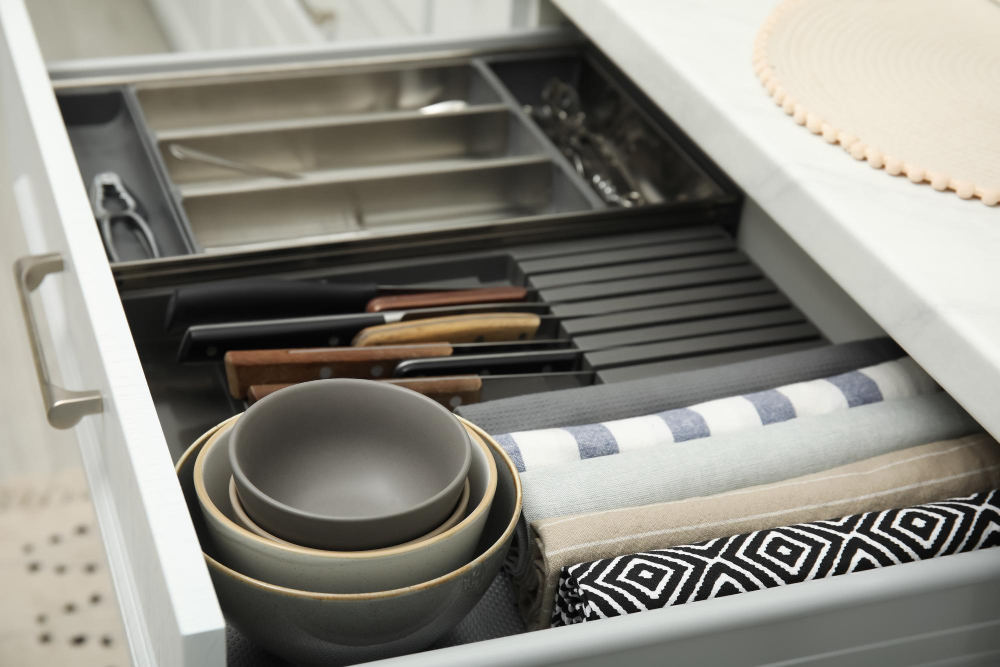
One of the most common causes is that the drawer slides are not lubricated enough or have accumulated dirt and debris over time. This can cause friction between the slides, making them move faster than they should.
To fix this issue, start by removing the drawer from its cabinet and cleaning both sides of each slide with a damp cloth. Once you’ve cleaned them thoroughly, apply a small amount of silicone-based lubricant to each slide before reinstalling the drawer.
Another reason why your drawers may be opening too quickly is that they’re not properly aligned with their corresponding runners or tracks. In this case, you’ll need to adjust their position using either side-to-side adjustment screws or up-and-down adjustment screws until they sit flush against their respective runners.
Drawers Going Ajar

Drawers that don’t stay closed can cause injury or damage to the contents inside. Fortunately, this issue is usually easy to fix with a few simple adjustments.
Firstly, check if there is any debris or obstruction in the drawer slide that may prevent it from closing properly. If so, clean out the area thoroughly before attempting any further adjustments.
Next, locate the adjustment screws on both sides of the drawer slide and tighten them slightly using a screwdriver until you feel resistance but not too tight as this could cause more problems.
Test your drawer by opening and closing it several times to see if it stays closed now. If not repeat these steps until you get desired results.
In some cases where drawers continue going ajar even after tightening adjustment screws then replacing worn-out slides might be necessary for proper functioning of soft close mechanism.
Drawers Not Closing All the Way
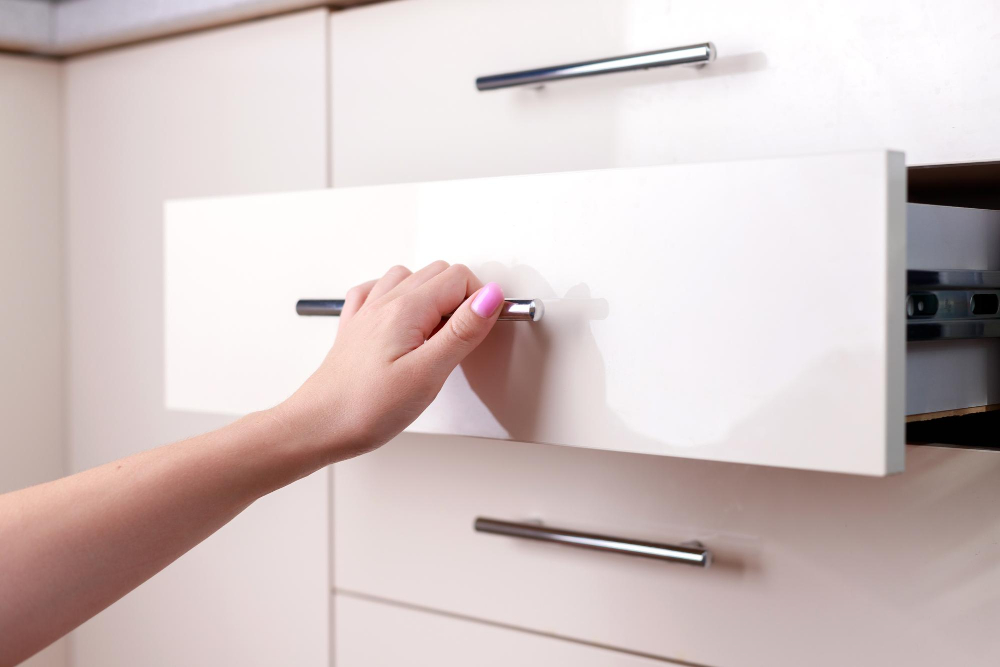
Fortunately, this issue can often be resolved with a few simple adjustments. The first step is to check if there are any obstructions in the drawer or on the slides that may prevent it from closing properly.
If everything appears clear, then you may need to adjust the position of your drawer by loosening or tightening its screws.
Another common cause of drawers not closing all the way is misaligned front panels. To fix this issue, you will need to adjust their position using a screwdriver until they align perfectly with each other and sit flush against your cabinets.
In some cases, drawers that do not close fully could also indicate worn-out hardware such as damaged slides or rollers which require replacement.
Maintenance Tips
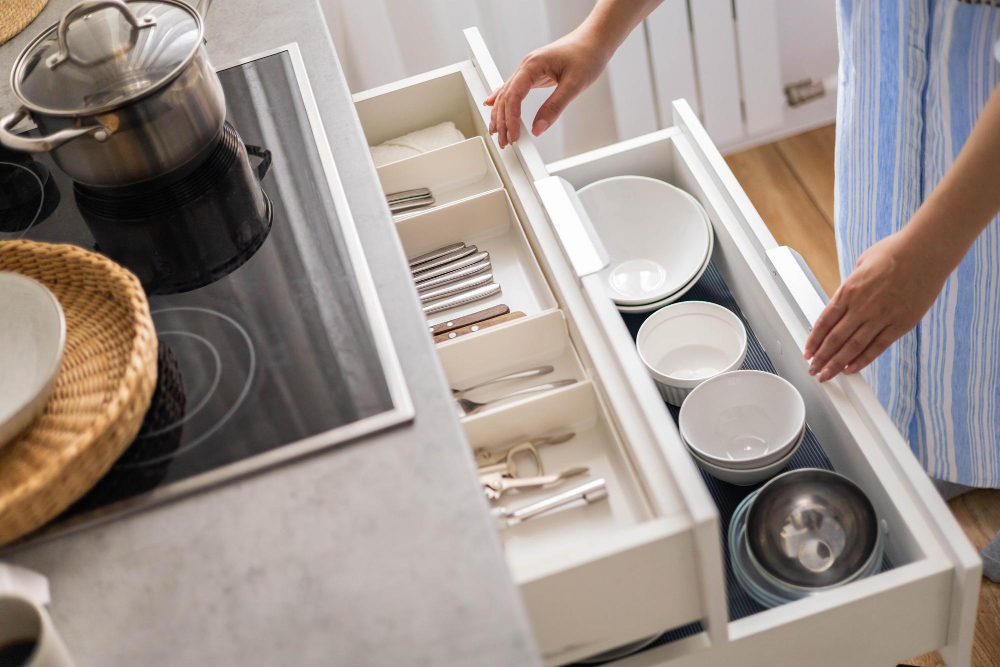
Here are some tips for maintaining your soft close kitchen drawers:
- Keep the drawer tracks clean and free of debris.
- Lubricate the drawer slides with a silicone-based lubricant every six months or as needed.
- Check for loose screws and tighten them if necessary.
- Avoid overloading the drawers beyond their weight capacity, which can cause damage to both the drawer and cabinet.
FAQ
Is there an adjustment for soft close drawers?
Yes, soft close drawers can be adjusted using built-in adjustment tabs located on the underside of the drawer box, and some guides also have a tilt adjustment found on the back of the drawer slides.
Why is my soft close drawer not closing fully?
Your soft close drawer may not be closing fully due to the misalignment of drawer dampers, which can be adjusted using the tilt tabs located behind the cabinet slides.
How do you adjust kitchen drawers?
To adjust kitchen drawers, slightly loosen the screws on both sides, raise or lower the drawer front until level, and then tighten the screws to secure the position.
What are the common issues with soft close kitchen drawers and their solutions?
Common issues with soft close kitchen drawers include misalignment, worn-out or damaged slides, and debris causing obstruction, with solutions being re-aligning the drawer, replacing or repairing slides, and clearing obstructions.
Can you retrofit standard kitchen drawers with a soft close mechanism?
Yes, you can retrofit standard kitchen drawers with a soft close mechanism by installing soft close adapters or devices designed for this purpose.
How do you maintain the smooth functioning of soft close kitchen drawers over time?
To maintain the smooth functioning of soft close kitchen drawers over time, regularly clean and lubricate the drawer slides, and ensure proper alignment and weight distribution.




